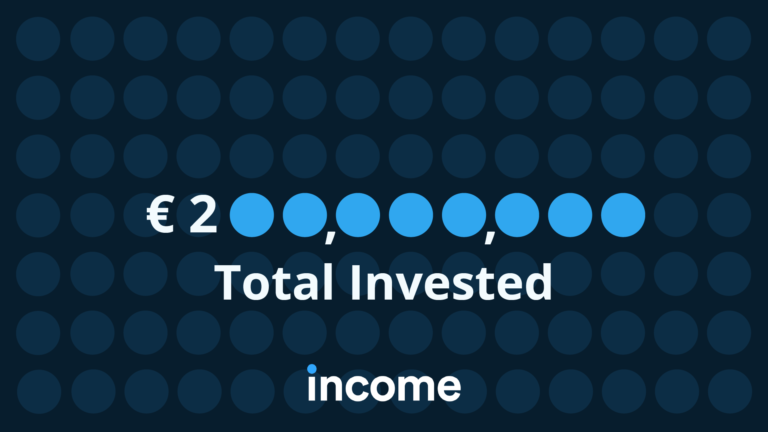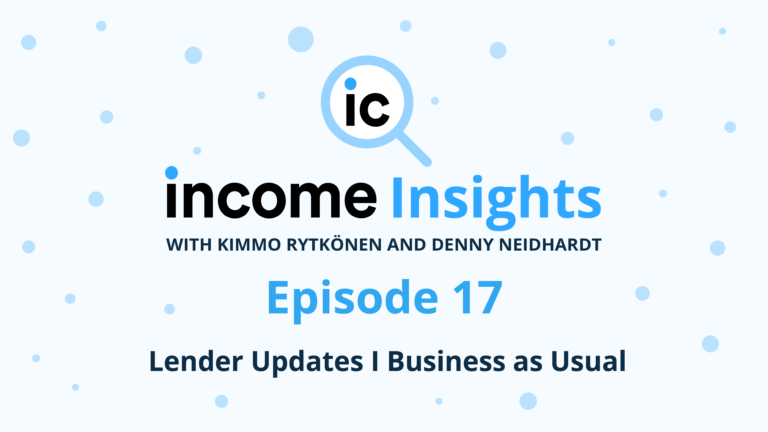Now that we know more about how to choose the P2P platform(s) to invest on, we should choose the Loan Originator whose loans we are investing in. Read more about choosing the Loan Originators and why diversification alone is not the best strategy.
How to choose the best P2P platform to invest in loans – Choosing the Loan Company
It will be almost impossible for you to assess the strength of a Loan Originator and all the possible risks associated with their business. Large professional institutions that invest in LO´s spend hundreds of thousands of euros on due diligence and still sometimes the companies they invest in fail.
Yet, they most often escape a LO default without losses and with their yield intact. How is this possible? They use analysis tools, just like Income marketplace, to put in place security measures such as the “cashflow buffer” and “junior share”.
Does it make sense to try and assess the strength of Loan Originators for retail investors. Absolutely. It will help, but it’s good to understand that the amount of information you don’t have for analysis will always exceed the amount of information you do have. External reviewers, P2P sites, and platforms, also try to do this work for you and commonly use available profit & loss statements and balance sheets to do this.
Analyzing the strength of a Loan Originator solely by the information on its balance sheet or profit and loss statement is difficult. These statements will give you an idea of the business, but without knowledge of the local accounting principles (GAAP) and booking principles of different revenue, cost, and provisioning items, it is likely that the analysis is inaccurate.
In addition to analyzing financial strength, one should be able to consider market risk, regulatory risk, operational risks, and risks that at the time of analysis are not even on the horizon.
So how does one invest in P2P loans correctly if it is so difficult to choose the right Loan Originator. The common answer is “diversification”, but is this really the answer?
Diversification as the right strategy?
Diversification in P2P means diversifying your investments into:
a) many different platforms and
b) many different Loan Originators that you deem strong enough based on the limited information you have. The theory is that with enough diversification your chances of total loss are smaller. This is true, but with diversification your chances of hitting a defaulting LO are also higher and losing capital in any one of the investments will seriously hit your risk/reward ratio.
Let me explain with a simplified example;
Let’s assume you´ve found 10 Loan Originators that you consider to be great investments. They all promise to pay you 10% per annum, which is a pretty standard rate these days in different P2P platforms.
You have €1000 to invest so you invest €100 in each of the 10 originators, €100 each. Diversification is the key to good P2P investment, right?
Not really. If nine of these loan originators perform exactly as promised and you get back full principal with the 10% interest as promised and only one fails where you lose 50% of your principal and earn no interest, your expected yield has been critically hit.
€900×10% = €90, the interest earned on the performing investments
€900 = the principal returned from the good investments
€50 = the principal returned from the one bad investment
= €1040 = only 4% per annum return, only barely enough to cover for inflation.
As you can see, diversification can help you prevent a total loss in case you have bad luck while choosing the LO´s, but it’s not the best solution.
Protection of principal as the strategy?
Better than diversification is to be able to invest in LO´s where you will not lose principal. This can be achieved by choosing an LO which never defaults (near impossible to 100% predict) or by choosing a platform where the protection of your investment is a priority and the platform has taken necessary measures such as introducing a “junior share” and a “cashflow buffer” to ensure you get paid in case the LO you chose defaults.
If we use the same example as above (9 good, 1 bad LO), on a platform where your principal is not protected you´d need to earn 15,5% on the good loans to make 10% per annum on the whole investment. As most LO´s pay between 10-12%, if one of these fails your yield will be between 4% and 5,8%.
Instead of diversification, you are far better off if you combine diversification with a strategy of capital protection, and allocate parts of your P2P portfolio to platforms where sufficient capital protection mechanisms are in place. The easiest way to do this, is to invest on Income marketplace. Income has both Junior share and a Cashflow buffer to protect your investment against the unlikely but possible Loan Originator default.
If you missed part 1, you can find it here




